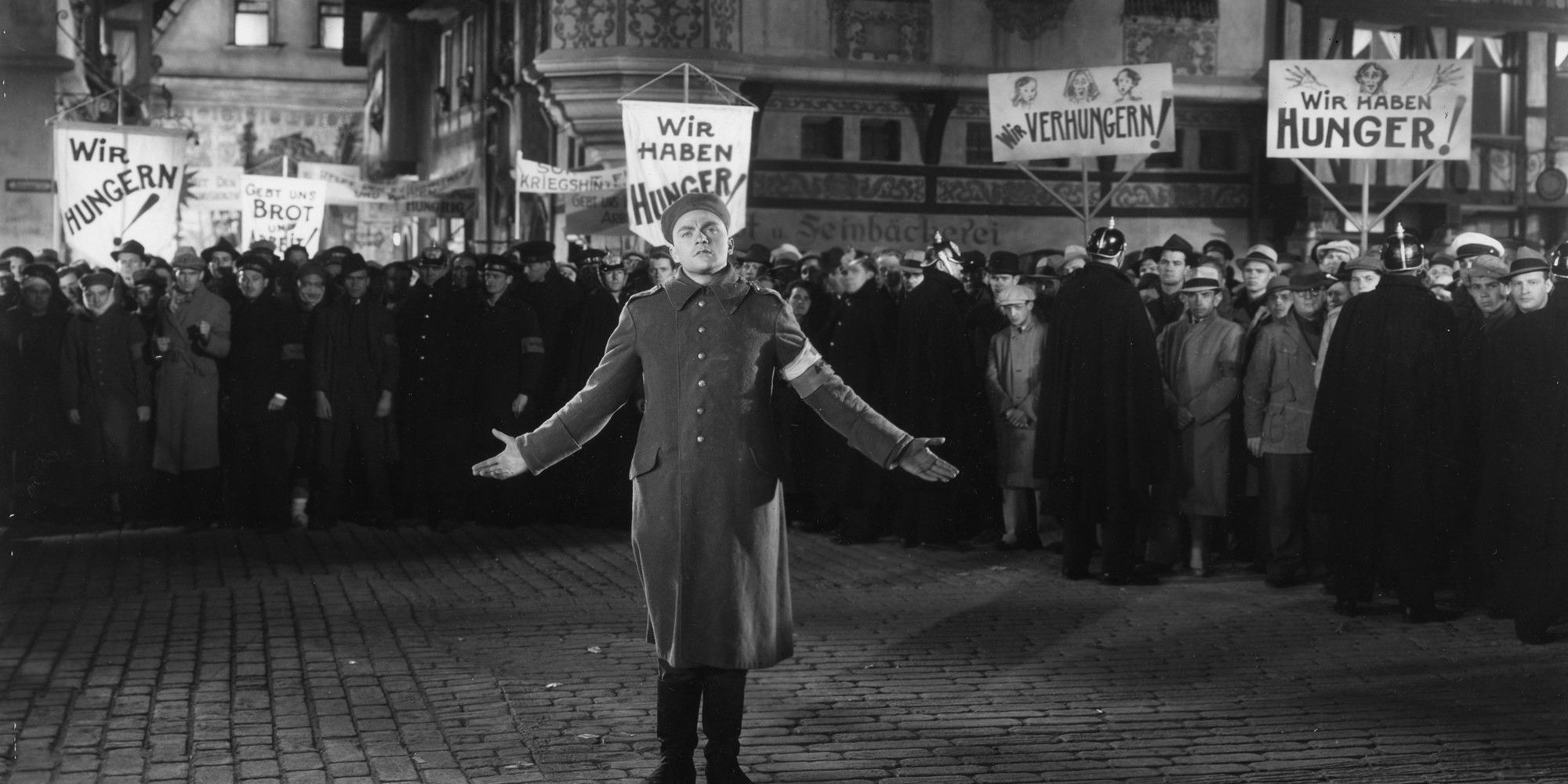The 1930 movie, All Quiet On The Western Front, is considered one of the greatest war movies ever made, and its success resulted in a largely forgotten sequel being released seven years later. Directed by Lewis Milestone, the movie depicts a young student, Paul Bäumer, and his group of friends, eagerly enlisting to fight for their country, but their excitement and enthusiasm is quickly shattered when they are confronted by the harsh realities of war. All Quiet On The Western Front was widely praised and won two Oscars, including Best Picture, the first talkie movie to win at the Oscars.
It was adapted from the 1929 novel by Erich Maria Remarque, and while both were praised, the 1930 film adaptation was one of several movies banned in different countries for its depictions of war and its political messages. Despite the controversies, All Quiet On The Western Front is still regarded as one of the best anti-war movies ever made, due in part to a powerful performance from Lews Ayres as Paul Bäumer, and its harrowing depiction of war. All Quiet On The Western Front has since been remade twice and also received a surprise sequel released in 1937.
The Road Back Is Considered A Sequel To All Quiet On The Western Front
The Road Back Was Adapted From The 1931 Novel By Erich Maria Remarque
In 1937, Universal Pictures released the historical drama, The Road Back, starring John King, Richard Cromwell, and Barbara Read. Directed by James Whale, the director of 1931’s Frankenstein of the original Universal Dark Universe, The Road Back is set in the aftermath of World War I and sees a group of soldiers returning to Germany and attempting to reintegrate into civilian life. However, they each soon discover the country they left behind before the war is no longer the same, and each struggle to move on from the horrors they experienced while battling in the trenches.
Erich Maria Remarque wrote The Road Back in 1931, as a sequel to his 1929 novel, All Quiet On The Western Front; it was first serialized in the German newspaper, Vossische Zeitung, between 1930 and 1931, before it was published as a novel (via Abe Books). The Road Back serves as a sequel to All Quiet On The Western Front due to its depiction of events that took place immediately after the end of the first movie. The two movie adaptations are connected through the appearance of the character, Tjaden, portrayed by Slim Summerville in both movies.
How The Road Back Compares To All Quiet On The Western Front
It Didn’t Reach The Same Level Of Success As The Original Movie
The 1937 movie adaptation of The Road Back had a difficult production, including the accidental death of stuntperson, George Daly. The director, James Whale, originally intended for the movie to be a strong anti-war movie, similar to 1930’s All Quiet On The Western Front. However, warnings from German industry censors and financial concerns meant that the script was rewritten, removing anti-Nazi statements that were featured in the novel. Whale was also ordered to reshoot parts of The Road Back to feature more comedic and romance scenes, further shifting focus away from the main story (via Slashfilm).
Upon release, The Road Back received mixed reviews from critics, with many agreeing that the sequel didn’t match up to All Quiet On The Western Front. While there was praise for its battle sequences, the movie was criticized for its confusing plot, and censorship of the novel’s anti-Nazi sentiments. Remarque was reportedly so upset with The Road Back, that he refused to renew his contract with Universal Pictures (via New York Post). A restored version of The Road Back was later released to better reviews, but wasn’t strong enough to reach the same level of success as All Quiet On The Western Front.
Sources: Abe Books, Slashfilm, New York Post






